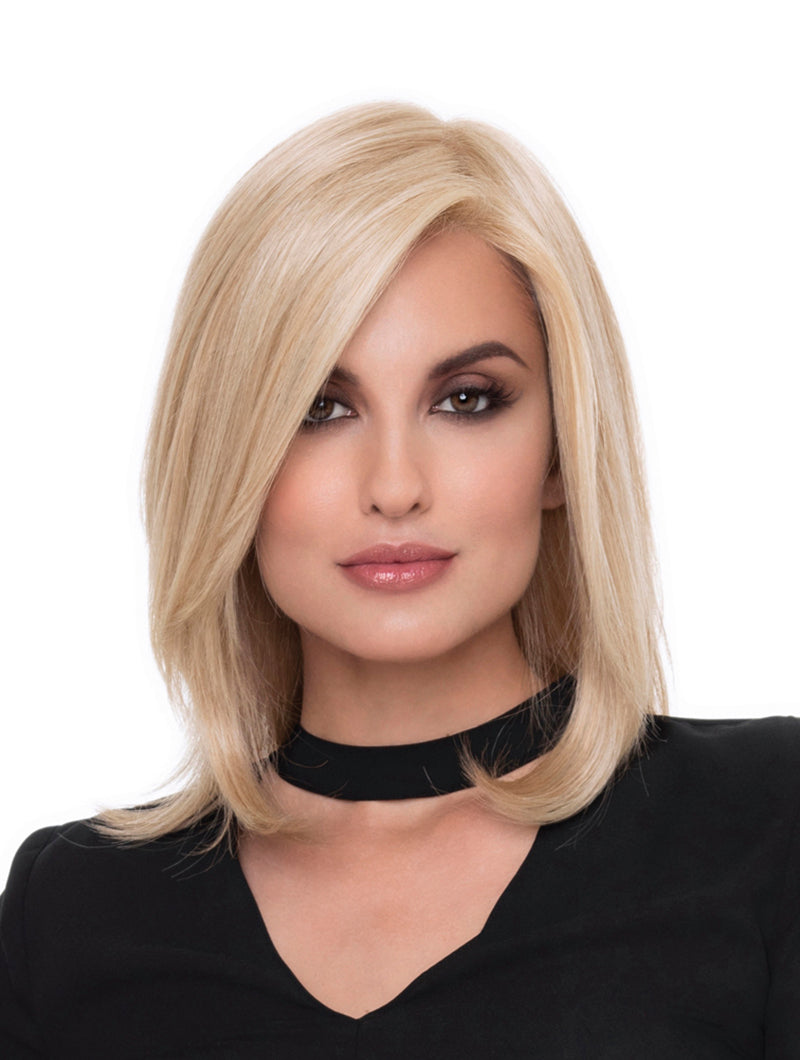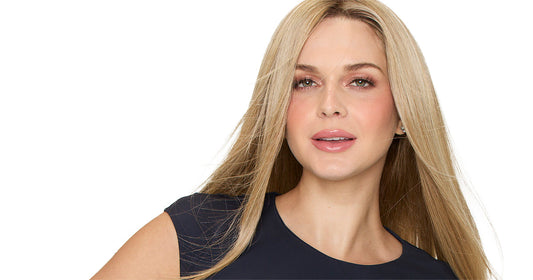The Anatomy of Wig Caps: A Comprehensive Guide
Wig caps are the foundation of any wig, playing a crucial role in comfort, fit, and the overall appearance of your style. Understanding the different components of a wig cap can help you make more informed choices when selecting the perfect wig. In this guide, we’ll break down the anatomy of Envy’s wig caps into three key sections: front, top, and back.
The Front of the Wig
The front of the wig cap significantly impacts how natural the hairline looks. Here are the primary types of front constructions:
1. Lace Fronts
Lace fronts are highly popular for their ability to create a natural-looking hairline and styling options. Strands are individually hand-tied to lace material, allowing for hair to be styled away from the face with confidence and ease.
Key features include:
- (Welded) Lace Fronts: Made of durable mesh material with individually hand-tied hairs, offering an incredibly realistic hairline. Welded monofilament is created by fusing thin monofilament threads using heat, most commonly through an ultrasonic welding process. This technique strengthens the mesh and creates a unified structure, often referred to as “welded lace.”
Variations of Lace Front Sizes:
- Temple-to-Temple Lace Fronts: Most lace fronts extend from temple to temple, providing a seamless and natural appearance.
- Extended Lace Fronts: Lace fronts that go beyond the temple area for even greater realism.
- Ear-to-Ear Lace Fronts: These options extend the hand-tied area all the way to the ear tabs, offering a very natural look along the entire hairline.



2. Non-Lace Fronts
Non-lace fronts are another common option, often featuring a fringe (bangs) to conceal the front hairline. Other common features with non-lace front wigs include permatease to camouflage the front base material or add lift. Underventilation is also common which are strands of hair tied into the underside of the wig in the front section to soften the front perimeter of the wig to appear more natural.
Variations include:
- Basic Front: Machine-sewn with no hand-tied areas or polyurethane. These are known for their durability and budget-friendly nature.
- Polyurethane Fronts: These often have hand-tied tops with a wider polyurethane strip for added security. The polyurethane provides a durable surface that is perfect for secure attachment with adhesives such as tape or glue.


The Top of the Wig
The top of the wig cap determines how the hair falls and where it can be parted. Here are the most common constructions:
1. Traditional
These feature machine-sewn wefts of hair with no hand-tied areas. Often sought after for their easy maintenance, volume, durability, and cost.
- Basic Caps: Features enclosed and covered wefts at the top, providing structure, support, and a fuller look. Often incorporating permatease to disguise base materials. This durable construction is cost-effective and allows for fast production, making it a practical choice for those seeking volume and affordability.
- Open Caps: Features machine-sewn wefts that are not enclosed, allowing for better airflow, making it lightweight and breathable. This design provides a cooler, more comfortable fit, especially for extended wear. Cost-effective and durable, open-cap wigs are a practical choice for those seeking comfort, affordability, and a lightweight feel.


2. Monofilament Parts
Mono parts feature a hand-tied section at the parting area, creating the illusion of natural hair growth for a realistic scalp appearance. The sheer mesh blends seamlessly with the skin, while the rest of the cap remains durable and cost-effective.
Variations include:
- Left part
- Right part
- Center part
3. Monofilament Tops
These caps feature a larger hand-tied area for multidirectional parting, offering versatility and a more natural appearance. Monofilament is a fine, transparent mesh material that covers the top section of the wig cap. Individual hairs are meticulously hand-tied to this breathable base, creating the appearance of natural hair growth from the scalp.



The Back of the Wig
The back of the wig cap is vital for ensuring a secure fit and a natural look. Key components include:
1. Hand-Tied Backs
Hair is individually hand-tied to the base, creating a natural flow and offering superior comfort and realism.The hand-tying process is meticulous and time-intensive, showcasing the skill and artistry behind each wig.
2. Wefted Backs
These feature rows of machine-sewn wefts, allowing for better airflow, a lightweight feel, and added structure to help maintain the style. Wefting can contribute to varying hair densities, with styles ranging from light to voluminous, ensuring versatility and a natural look.


3. The Nape Area
- Material Options: Some napes are lined with velvet for added comfort, while others are made with basic wefting.
- Extended Napes: These are wider nape areas that offer additional coverage, especially helpful for updo styles.
-
Adjustment Options:
- Hook Closures: Adjustable hooks to loosen or tighten the fit.
- Velcro Straps: A secure and easy-to-use alternative for adjusting the cap size.
- Metal Stays: Found in some napes, these bendable components provide extra security and ensure the wig fits snugly against the head.


Other Special Cap Features
Ear Tabs
- Velvet-Lined Tabs: These tabs are lined with a soft velvet material and include metal stays. The stays are bendable wires that ensure the wig lays flat against the head, providing extra comfort and a secure fit.
- Wefted Tabs: Basic ear tabs without additional lining or support.
Envy’s SoSoft Cap Feature
This feature adds an extra layer of soft lace material to enhance comfort and reduce itchiness. Strands are individually hand-tied to welded lace front, mimicking a natural hairline.

Silk Chiffon-Lined Caps
The silk chiffon lining in these wig caps is a soft, ultra-light layer that adds extra comfort against the scalp. Strands of hair are hand-tied to a breathable, flexible base covered with silk chiffon, creating a smooth, comfortable surface.

Polyurethane
Polyurethane is a thin, smooth material often found on ear tabs, and other areas of the cap. It provides a durable surface that is perfect for secure attachment with adhesives such as tape or glue.

Silicone
Silicone is a material that provides a natural grip against the skin, ensuring a secure and comfortable fit without adhesives. It is commonly found in areas like the nape or ear tabs on specific wig cap designs.
![]()
Understanding the anatomy of wig caps can make a significant difference in your wig-wearing experience. Whether you prioritize comfort, style versatility, or realism, knowing the unique features of the front, top, and back of a cap will help you choose a wig that meets your specific needs. Envy Wigs offers a wide range of options to ensure you’ll find a cap construction that’s perfect for you!






